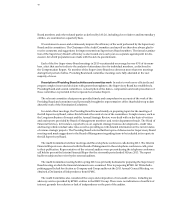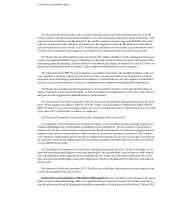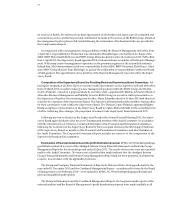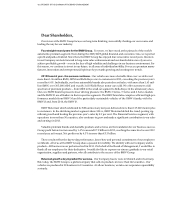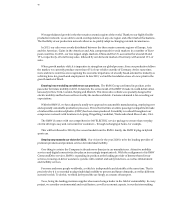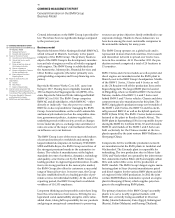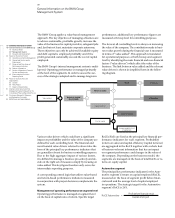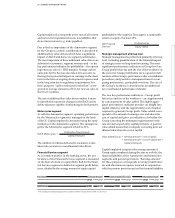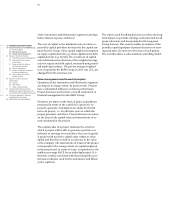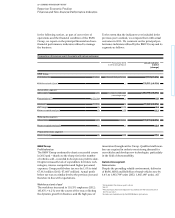BMW 2013 Annual Report Download - page 20
Download and view the complete annual report
Please find page 20 of the 2013 BMW annual report below. You can navigate through the pages in the report by either clicking on the pages listed below, or by using the keyword search tool below to find specific information within the annual report.
20
18 COMBINED MANAGEMENT REPORT
18
General Information on the BMW Group
18 Business Model
20 Management System
23 Research and Development
24 Report on Economic Position
24 Overall Assessment by Management
24 General and Sector-specific
Environment
27
Financial and Non-financial
Performance Indicators
29 Review of Operations
47 Results of Operations, Financial
Position and Net Assets
62 Events after the End of the
Reporting Period
63 Report on Outlook, Risks and
Opportunities
63 Outlook
68 Risks Report
77 Report on Opportunities
81 Internal Control System and Risk
Management System Relevant for
the
Consolidated Financial Reporting Process
82 Disclosures Relevant for Takeovers
and Explanatory Comments
85
BMW Stock and Capital Markets
The BMW Group applies a value-based management
approach. The key objectives of managing a business are
to achieve sustainable, profitable growth, increase the
value of the business for capital providers, safeguard jobs
and, last but not least, maintain corporate autonomy.
These objectives can only be achieved if available equity
and debt capital is employed profitably and if the
profit
generated sustainably exceeds the cost of capital
employed.
The BMW Group’s internal management system is multi-
layered. Operating performance is managed primarily
at the level of the segments. In order to assess the suc-
cess of the strategies adopted and to manage long-term
Various value drivers which could have a significant
impact on profitability and the value of the company are
defined for each controlling level. The financial and
non-financial value drivers referred to above take the
form of the principal key performance indicators that
are generally relevant for business controlling purposes.
Due to the high aggregate impact of various factors,
it is
difficult to manage a business pro-actively and de-
cide on the right set of measures simply by focusing on
value added. This key figure therefore only serves for
intermediate reporting purposes.
A corresponding control logic that utilises value-based
and return-based performance indicators measured
in conjunction with project decisions complements the
system.
Management of operating performance at segment level
Operating performance is managed at segment level
on
the basis of capital rates of return. Specific target
performance, additional key performance figures are
measured at Group level for controlling purposes.
The focus at all controlling levels is always on increasing
the value of the company. The contribution made to busi-
ness
value growth during the financial year is measured
in terms of “value added”. This approach is translated
for operational purposes at both Group and segment
level by identifying the main financial and non-financial
factors (“value drivers”) which affect the value of the
business. The link between value added and the relevant
value drivers is shown in simplified form in the follow-
ing diagram.
RoCEs / RoEs are fixed as the principal key financial
per-
formance indicators for each segment. Profitability
(return on sales) and capital efficiency (capital turnover)
are
aggregated in the RoCE together with a whole host
of business-relevant information that has an impact
on segment performance and changes in the value of
the
company
. Depending on the business model, the
segments are managed on the basis of total RoCEs or re-
turns on equity capital.
Automotive segment
The principal key performance indicator for the Auto-
motive segment is return on capital employed (RoCE),
measured on the basis of segment profit before finan-
cial result and the average level of capital employed
in operations. The strategic target for the Automotive
segment’s RoCE is 26 %.
Profit before financial result
RoCE Automotive = Capital employed
General Information on the BMW Group
Management System
Value added Return on capital
(RoCE / RoE)
−Expenses
+ Revenues
Return on sales
Capital turnover
Cost of capital
Profit
Capital employed
Average weighted cost
of capital rate
×−
+
×
÷
÷


